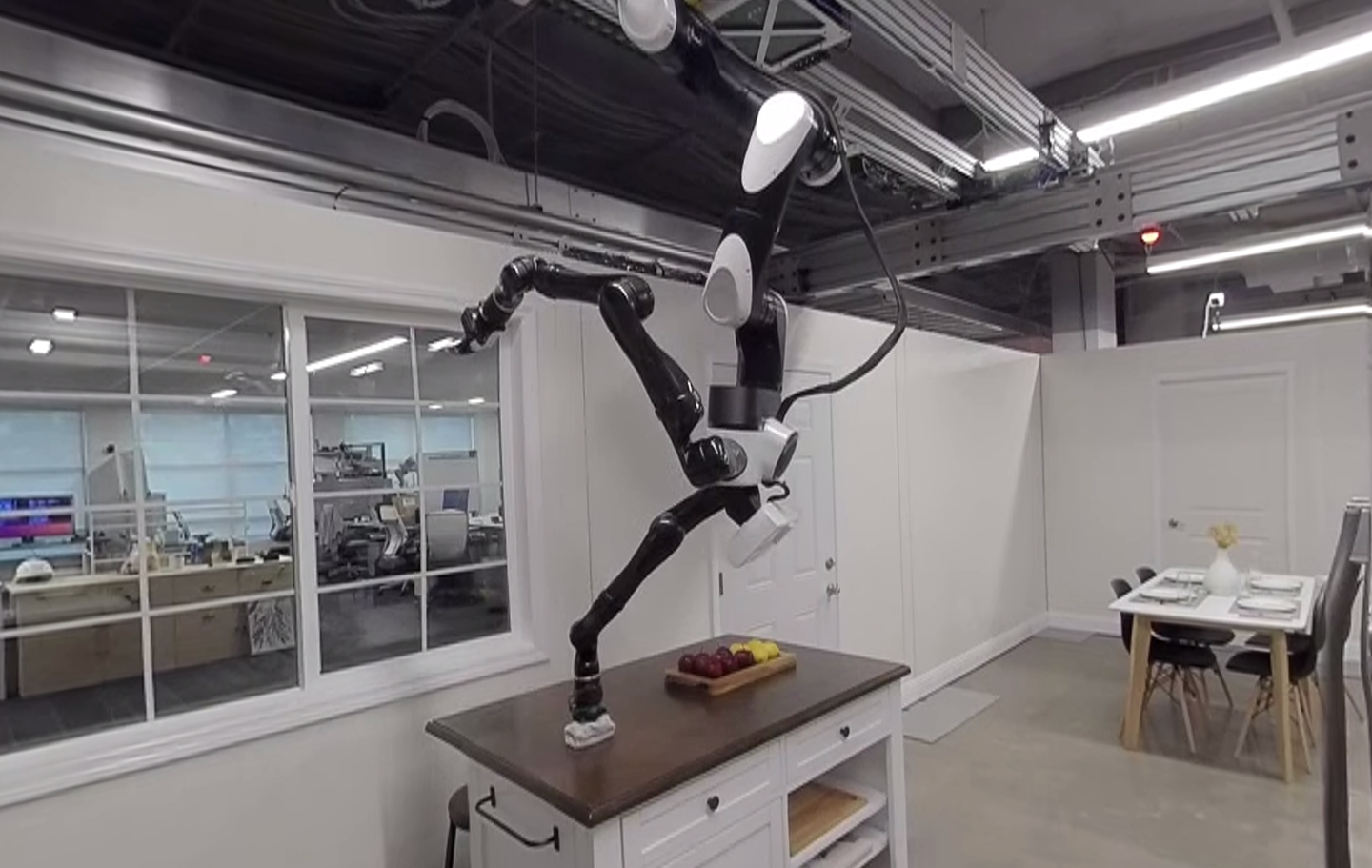Toyota’s robotic butler will serve you from the ceiling
Users can train it to perform complicated tasks by first demonstrating them in VR.

We may earn revenue from the products available on this page and participate in affiliate programs. Learn more ›
Five years ago, Toyota announced a $1 billion commitment to its Research Institute (TRI) and hired hundreds of engineers to work on forward-thinking robotics and AI-driven products, such as self-driving cars. This week, TRI gave journalists a chance to attend a virtual open-house (part of which you can watch in the video embedded below) to see what the labs have been building.
The bulk of the prototypes shown during the event are meant to help people out around their homes. The idea of a helper robot has been around for decades, but it has already begun to gain more real-world traction, especially in countries such as Japan where an aging population could cause shortages in support staff.

TRI’s primary home robot design is built to hang from a special set of tracks built into a home’s ceiling. We typically imagine robot butlers rolling or actually walking around our spaces (due at least in some part to the awful robot butler in Rocky IV), but TRI says mounting a bot on the ceiling brings considerable advantages.
First, the robot has a simpler time learning the layout of the home—it doesn’t need to learn complex paths around obstacles to get from one place to another because there’s a kitchen island or a new recliner to get in its way. That also means the robot won’t get under foot as someone tries to navigate around their own home. TRI’s bot can fold up tightly to the ceiling when it’s not in use, so it effectively takes up zero usable space.
TRI also claims that the top-down viewpoint gives the machine a better point of view for observing its own actions and the relative position of different objects it might have to manipulate. Toyota is big on robots learning from limited sets of parameters. So, if you wanted the robot to learn to wipe down the countertops, a human could perform that action in VR and the robot would understand the human’s actions and mimic them in the real world while monitoring variables. If you wanted to teach the robot to clean your countertops, you could do it in VR and it would understand going forward. Also, through what’s known as fleet learning, a human could teach one bot, and other networked machines would get the same lessons.
Numerous joints in the robotic arm allow it to move in all directions. In fact, some of the joints are redundant, allowing it to rotate and orient itself in pretty much any position. The problem, however, is that the whole house needs to essentially be designed around the machine. Installing the complicated support system as an aftermarket product would be a huge undertaking (though, Toyota currently has no concrete plans to bring this to market yet anyway). Ideally, the robot would be a central part of the home’s planning before construction gets underway.
That concept makes more sense as it scales to multi-unit buildings like elder care facilities. If the builders could make the units look nearly identical on the inside, engineers could train one robot, then share that information with the rest of the networked machines.

In addition to the whole home bot, TRI also showed off some smaller aspects of the tech. The bubble gripper, for instance, is an automated claw with soft pads on its gripping surfaces. A light system projects a series of dots on the inside of the pads and a camera to observe how the pads deform when it picks up an object. As a result, the system can analyze—in real time—the properties of the object with which it’s interacting. The demo showed it stacking several delicate wine glasses on top of each other on an unfamiliar surface.
TRI has clearly made considerable progress on its robotic pursuits and plans to continue working on this kind of tech in the future. There’s no hard plans to make this available to the public just yet, but the company does hope to roll out at least some of these technologies in the near future. This segment is clearly growing globally as well. Back at CES, Samsung debuted a robotic chef concept that uses a similar ceiling-mounted design. That’s just a prototype as well, for now, but we’re clearly getting ever closer to the day when your personal bot can make you an omelette in the morning.
